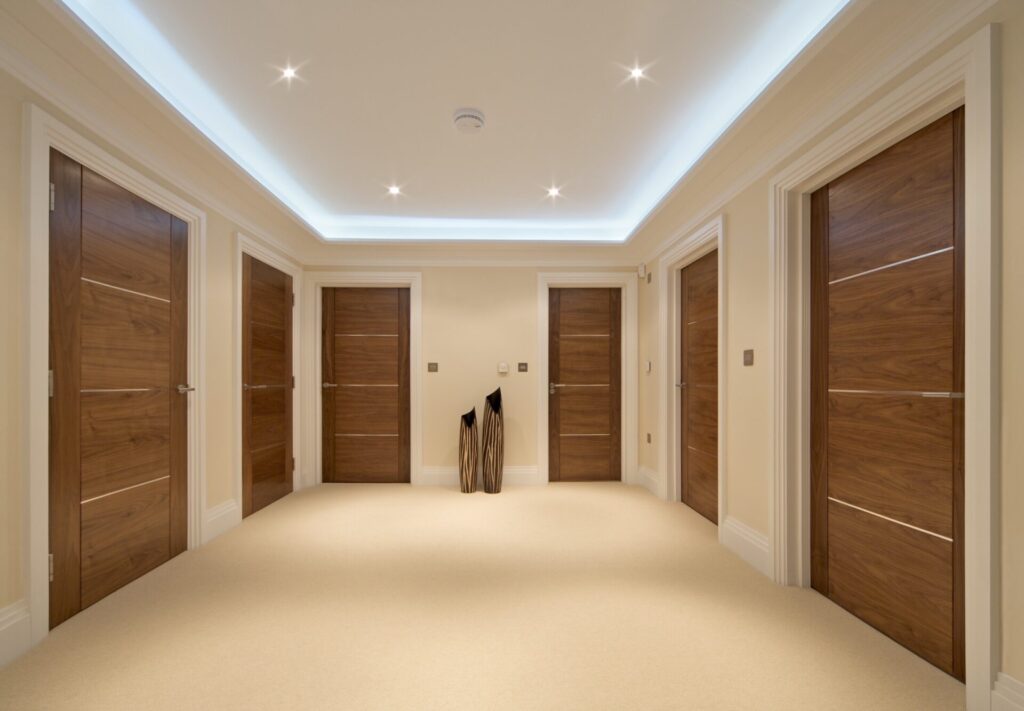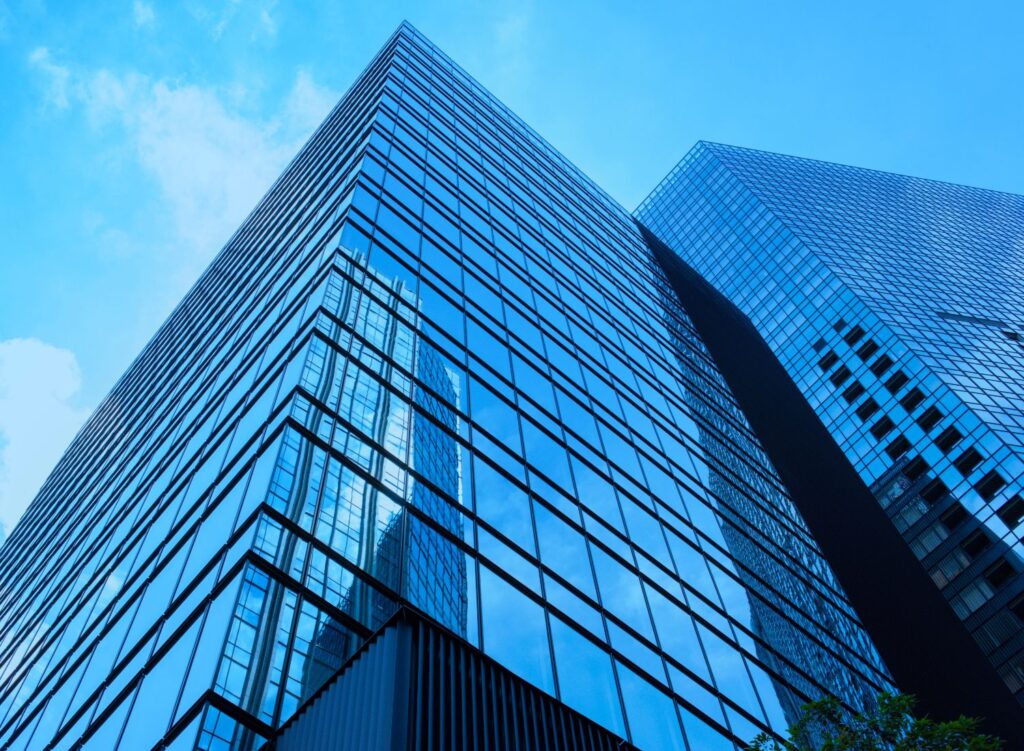Enhancing Safety and Compliance
Our expert fire door fitting service is designed to protect lives and assets, ensuring your building meets all relevant regulatory requirements.
Why Choose Our Fire Door Fitting Service?
- Enhanced Safety Features: Our fire doors are engineered to contain fires and prevent the spread of smoke, which is crucial for protecting occupants and property.
- Compliance Assurance: Stay ahead of regulations with our up-to-date knowledge and certified fire door fitting processes.
- Professional Expertise: With over 20 years of experience, our specialist fire door fitters deliver unparalleled quality and attention to detail.


Comprehensive Fire Door Solutions
We offer a range of fire door options to suit your specific needs:
- Steel Fire Doors: Ideal for high-traffic areas requiring maximum durability
- Wooden Fire Doors: Perfect for blending safety with aesthetic appeal
- Composite Fire Doors: Combining strength and insulation for optimal performance
The Doors Inc. Difference
What sets us apart is our unmatched level of expertise. Our specialist team of fire door fitters ensures each installation meets the highest standards of safety and quality.
We don’t just install doors; we provide peace of mind.
Ready to enhance your building’s fire safety?
Contact us today for a free consultation and take the first step towards a safer, compliant property.
Explore All of Our Fire Door Services
FIRE DOOR FITTING – FREQUENTLY ASKED QUESTIONS
GENERAL QUESTIONS
What is a fire door and why is it important?
A fire door is a specially designed door that helps contain fire and prevent the spread of smoke in a building. It forms a crucial part of a building’s passive fire protection system, providing vital time for occupants to evacuate safely and for emergency services to respond.
Are fire doors a legal requirement?
Yes, fire doors are a legal requirement in many buildings as specified by UK Building Regulations. They are mandatory in non-domestic properties, houses of multiple occupation (HMOs), and in residential buildings where a door separates a dwelling from a common area.
INSTALLATION REQUIREMENTS
Who can install fire doors?
Fire door installation is critical to safety and should only be carried out by competent individuals who have been specifically trained to install fire doors and understand the importance of correct installation. We recommend using certified installers who understand all the regulatory requirements.
What are the key requirements for proper fire door installation?
Proper installation requires:
- Following the manufacturer’s specific installation instructions
- Using compatible components (frames, seals, hardware) certified for use with the specific door
- Maintaining correct gaps between the door and frame (typically 2-4mm at the top and sides)
- Ensuring threshold gaps meet manufacturer specifications (typically 8-10mm)
- Proper installation of intumescent strips and smoke seals
- Correct fitting of essential ironmongery (hinges, closers, latches)
What gap should be maintained between the door and frame?
The gap between the door and frame at the top and sides should be 2-4mm, while the threshold gap should follow the manufacturer’s instructions (typically around 8-10mm). Incorrect gaps can compromise the fire door’s performance.
Can I cut apertures for glazing or air transfer grilles on site?
No. Never cut glazing apertures on site. This will invalidate the door’s certification. Cutting apertures for glazing and air transfer grilles should only be carried out by a certified licensed processor.
Components and Compatibility
What kind of hardware should be used with fire doors?
All ironmongery, such as locks, latches, closers, and hinges, must be CE marked and compatible with the door’s certification. They must be firmly fixed with no missing screws. Always check the door’s certificate to ensure compatibility.
Do fire doors require special frames?
Yes, the frame specification must be correct for the door’s fire rating. The certification will specify compatible frame types. Ensure any voids between the door frame and wall are tightly packed with appropriate fire-resistant material (typically mineral wool).
What are intumescent strips and why are they important?
Intumescent strips expand when exposed to heat, sealing gaps around the door to prevent the passage of fire and smoke. These must be correctly installed in the locations specified by the door’s certification and are essential for the door to function properly in the event of a fire.
Maintenance and Checks
How often should fire doors be checked?
For buildings with the top storey above 11m in height, regulations require:
- Flat entrance fire doors to be checked at least every 12 months
- Fire doors in communal areas to be checked at least every 3 months
Regular checks are also recommended for all other buildings with fire doors.
What should be checked during fire door inspections?
Key checks include:
- The door closes properly from any position and latches securely
- No visible damage to the door or frame
- Intumescent strips and smoke seals are intact and undamaged
- All hardware is functioning correctly
- Gaps between the door and frame remain within acceptable limits
- No unauthorised modifications have been made
Can fire doors be repaired if damaged?
Minor damage may be repairable, but this should only be done by competent individuals and in accordance with the door manufacturer’s guidance. Significant damage often requires complete replacement to maintain certification and safety standards.
Professional Installation vs DIY
Can I install fire doors myself?
While it’s technically possible, we strongly advise against DIY installation of fire doors. Incorrect installation can compromise safety and invalidate insurance. Professional installation ensures compliance with regulations and proper functioning in an emergency.
What documentation should I receive after professional fire door installation?
After professional installation, you should receive:
- Certification for the installed doors
- Installation documentation confirming compliance with regulations
- Maintenance recommendations and schedules
- Information about the fire rating and performance of the doors
How can I ensure my fire door installation complies with regulations?
Using a professional installer is the best way to ensure compliance. They will be familiar with current regulations and will install the doors according to the manufacturer’s specifications and building requirements.




